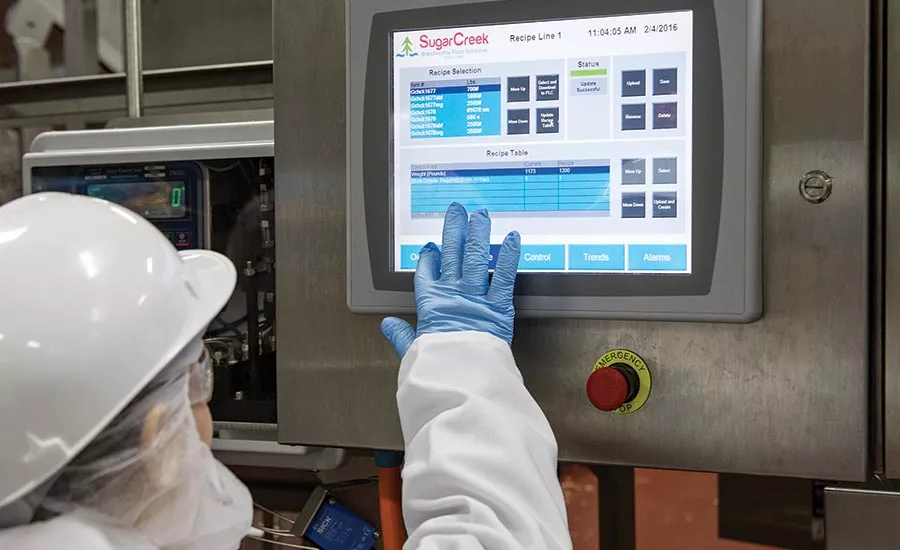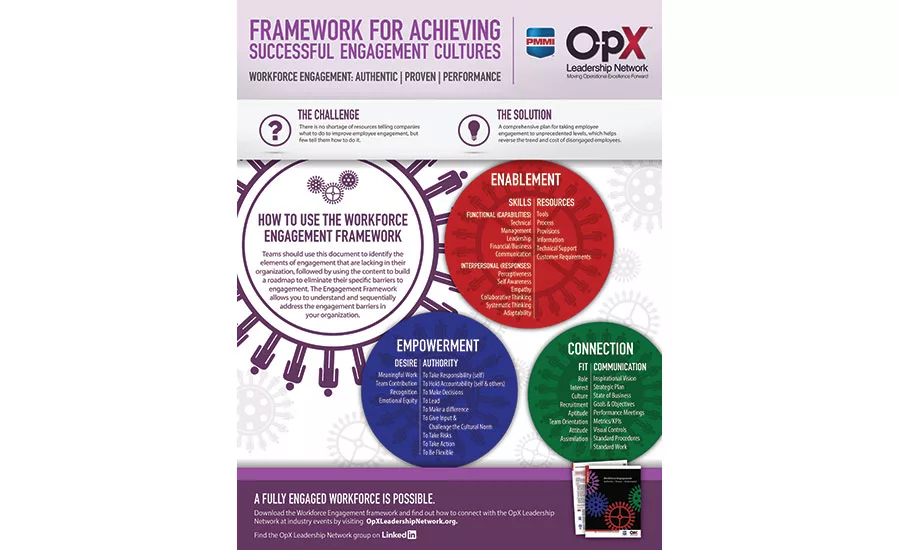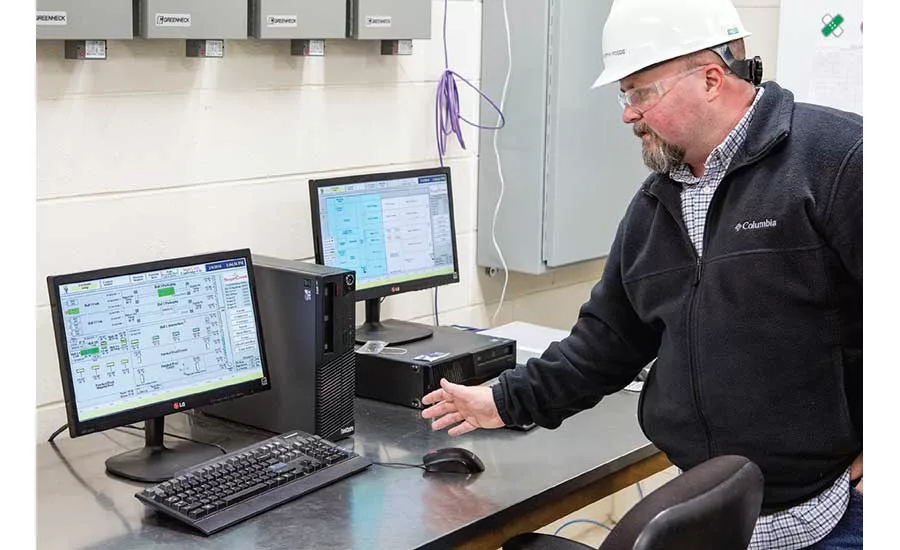Automation Series
Processors use technology to improve employee engagement
New tools are available for processors wanting to connect their workers, but to succeed, companies must have a business plan, transparent communications and a mindset for continuous improvement.

With an engaged workforce, SugarCreek, 2016 FE Plant of the Year, uses technology to empower operators with actionable information to make process decisions at any time.
Photo courtesy of Ross Van Pelt, RVP Photography

For food processors wanting to learn about workforce engagement, the OpX Leadership Network is a great place to get started. Processors can download a manual to learn how to set the foundation for a fully engaged workforce—from operators to senior management. For more information, visit the OpX Leadership Network at www.opxleadershipnetwork.org.
Photo courtesy of OpX Leadership Network

Engaged workers can use smartphones on the plant floor to look at process status.
Photo courtesy of Wayne Labs

Engineers have access to environmental controls anywhere in the plant at SugarCreek via connected devices and with a wireless network, as well tablets or smartphones.
Photo courtesy of Ross Van Pelt, RVP Photography
Measuring success and fostering engagement
When you think of KPI, do you see a scoreboard hanging from a ceiling in the middle of each room in the plant showing the KPIs of teams/lines today, yesterday—and maybe even stats for the year? Can KPIs be fair, can they promote engagement, and can they be gamed? After all, when you follow your favorite football or baseball team, you’d like to see how they stack up against the league.
“The next time you watch your favorite sport/team, imagine there was no scoreboard,” says ICONICS’ Topp.
Would you still enjoy the game if there were no way to mark success or failure? Data-based process improvement levels the playing field, to continue the sports analogy. In a manufacturing environment, it allows for the analysis of information to be shared throughout an organization, so that “winners” and “losers” can be determined objectively rather than subjectively.
Ultimately, it’s up to individual organizations to decide how to reward high-performing employees or motivate those who are underperforming, but processed-based data/KPIs can provide a logical starting point. The technological challenge is to ensure that all relevant influencers (data points) are included to provide as complete a picture as possible for employee/team/location/etc. performance-based decision-making, adds Topp.
“Everyone in an organization should be working towards the same goal, so identifying where that is happening successfully, or maybe not successfully, is important to informing strategy,” says Deloitte’s Reilly.
Metrics don’t need to identify “winners” and “losers;” rather, they can be looked at holistically to inform things—like where training may be needed, where processes may need refining and where opportunities may lie for aligning employees to their strengths through reassignments, retraining and re-skilling, adds Reilly.
“Any tool or metric can be used or abused depending on how it is applied in practice,” says Factora’s Lynch. “There is an age-old saying that says ‘what gets measured gets better.’ This has to be done with a mindset of genuine improvement, collaborative team spirit and measuring real improvements.”
Also, Lynch suggests sub-par results should not be punished, but used as a training and continuous improvement opportunity to teach workers proper procedures to get the best results.
There is, however, a science or method to defining the KPIs you want to use in your application.
“You don’t create KPIs just so you have something to measure,” says Infor’s Edgett. “You define KPIs that are critical to the success and growth of your business. This has been the challenge with big data for years, in that we sometimes try to evaluate data that, honestly, has minimal impact on your business. It’s not the number of KPIs you have; it’s knowing which ones really matter.”
When the proper metrics are defined and used, and employees have had input on them, you’re less likely to have problems down the road. But is it possible that an employee could game the data? After all, metrics are essential to improve performance and productivity. Metrics are in place to drive specific behaviors that will enhance performance.
“However, human beings have a special gift in finding creative ways to game the data,” says Oblong Industries’ Bories. “A culture based on transparency and openness around what is happening is critical to reduce the possibility of gaming the data. A prioritization of the performance drivers is also critical to clarify what is or is not acceptable.
“A typical example would be someone implementing a new process that will increase output, but also elevates concerns around safety issues,” adds Bories. “If you create an environment and a space where all is explained, it reduces the opportunity for misunderstanding, which, in turn, has a strong correlation to engagement.”
“Yes, most systems and approaches can be gamed,” says Sierra Nevada Brewing’s Lewis.
The way around this (and it is a constant effort) is to ensure that all parts of the organization are on board and understand and are in agreement on the goals. As long as the tools (KPIs, etc.) are not turned into clubs, represent reasonable goals and are periodically re-evaluated for relevance, etc., there is a reasonable chance they will be useful.
Looking for a reprint of this article?
From high-res PDFs to custom plaques, order your copy today!








